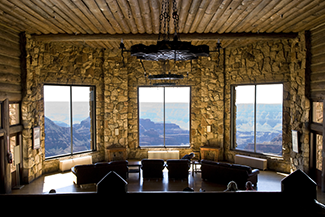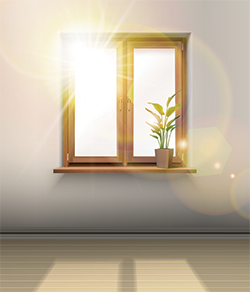Shopping For Windows? Choose The Right Upgrade.
Shopping For Windows? Choose The Right Upgrade.
Today’s windows come with an abundance of options and upgrades, and it can be challenging to figure out which ones are important.

Sal Sucato, owner of Rosie-Certified Partner DunRite Windows & Doors shares his expertise on which upgrades matter and which don’t, so you can get the most out of your investment.
“Many people have a good idea of what type of material they want for their windows—vinyl, fiberglass, composite, aluminum-clad wood, etc. -- or even have a particular brand in mind. But when it comes to features, they just aren’t sure what to choose,” says Sucato. “Doing a little homework before sitting down with a salesperson can help you get the most possible bang for your buck, so you aren’t swayed by a slick presentation or high-pressure tactics.”
Choosing a double-pane window is a given. Single-pane windows aren’t even sold anymore, they’re very outdated. But should you consider a triple-pane upgrade? Sucato suggests that homeowners in the desert regions of Arizona avoid them, because they’re best suited to extremely cold climates rather than hot climates.
A home in Flagstaff might benefit from them, because it can get quite cold in the winter, as would a snowbird’s second home in Michigan, but the winter home in Sun City should budget for double-pane.

However, the triple-pane does a fantastic job of suppressing noise. If you’re living in a home just off the freeway, installing them in windows that face the noisy highway can be worthwhile. For most homes, though, triple-pane windows are not necessary. You would have to live in the home for fifteen-plus years for the small amount of money saved on utility bills from the upgrade to cover the cost of the upgrade itself. Many people don’t stay in one home for that long, most never see a return on the investment.
What about low-e glass and gas insulation between the panes? “Absolutely!” adds Sucato. “These are the two most beneficial upgrades to consider.”
Low-e coatings (low emission) on glass is an upgrade that quickly pays for itself. It keeps the heat from the sun from entering the home. It also protects furnishings, artwork, and wall coverings from fading by blocking UV light, and helps retain heat inside the home during the winter.
Sucato says, “The glass itself isn’t terribly important, since all window manufacturers purchase sheets of glass from the same sources, but proprietary coatings layered onto that glass by the window manufacturer can make a tremendous difference in a window’s energy efficiency. Low-e upgrades are a good place to invest.”
Looking for a product that has an Energy Star® rating can be valuable, because it indicates the product meets certain requirements for energy efficiency. It should be a rating for the specific area of the country where the windows are being installed, such as the Southwest, not where the window is manufactured. But the most important label is one provided by the NFRC—the National Fenestration Rating Council—which is legally required to be available for every window and door product.
“I recommend NFRC.org as a great resource to learn how to interpret product labels on energy efficiency,” adds Sucato. “It tells you specific details for each window and can easily be compared if you’re choosing between several different products or manufacturers.”
He suggests any salesperson should be able to explain possible savings so the homeowner understands what they are purchasing. the estimated impact on their utility bills that different products might have and documentation should be provided before purchase.

Argon or krypton gas is another upgrade that’s worth the bump to your budget. Having the invisible gas inserted between the layers of glass forms an insulation that is significantly better than air alone.
“Remember how you could touch a single-pane window from inside the house, and feel the scorching heat of the sun or the shivery chill of a cold day? Glass transfers that temperature. Two panes of glass help a little, because there’s a buffer of air breaking direct transfer of the heat (or cold),” says Sucato “There’s nothing to keep that air from rapidly warming or cooling from contact with the exterior glass, though. When you use glass insulation, there’s close to zero conductivity. If you touch the glass on a double- or triple-pane window from inside the home, you can expect it to feel close to room temperature no matter how hot or cold it is outside. That’s what you want.”
“The spacer size will vary depending on the glass thickness,” Sucato says. “The overall glass thickness is 7/8 to one-inch and the actual glass can be from 1/4 to 1/8 per each.”
Energy efficiency matters. According to Energy Star®, installing ENERGY STAR certified windows, doors, and skylights can shrink energy bills — and carbon footprints — by an average of 12 percent nationwide, compared to non-certified products.
For typical homes, choose ENERGY STAR and save on average $101 to $583 a year when replacing single-pane windows and $27 to $197 a year when replacing double-pane, clear glass windows. (Ranges are based on the average savings among homes in modeled cities. Actual savings will vary based on local climate conditions, utility rates, and individual home characteristics.)
Before you stop reading and start shopping, there are seven upgrades that Sucato does not recommend for most Valley homes, unless certain circumstances apply. Tempered safety glass (unless required by code or wanted for other safety reasons), foam insulation, specialty upgraded glass spacers, self-cleaning glass, upgraded screens, fiberglass-reinforced locking rails, and accidental glass breakage warranties tend to be unnecessary.
DunRite offers a FREE e-book featuring tips for buying replacement windows. It’s packed with information to help you make an educated decision.
Home Maintenance To-Do: #WindowReplacement
Podcast
Sal Sucato, owner of Rosie-Certified Partner DunRite Windows And Doors, shares his expertise on which window upgrades matter and which don’t, so you can get the most out of your investment. Plus we cover some general homeowner questions on water heater replacement, treating wooden slats on a fence, cabinet refacing and performing a general inspection of a home.
###
SPONSORED BY: DunRite Windows & Doors
 Founded in 2001, DunRite Windows & Doors is a family-owned business that installs products from top window and door manufacturers carefully screened for their quality and warranties, including Andersen, Thermatru, Milgard, Pella, Anlin, Masonite and more. Double-pane windows to ceiling-height, big sliding glass doors - DunRite offers a wide variety of replacement options, backed with a Rosie-approved reputation for five-star service, great prices and a smooth, hassle-free experience!
Founded in 2001, DunRite Windows & Doors is a family-owned business that installs products from top window and door manufacturers carefully screened for their quality and warranties, including Andersen, Thermatru, Milgard, Pella, Anlin, Masonite and more. Double-pane windows to ceiling-height, big sliding glass doors - DunRite offers a wide variety of replacement options, backed with a Rosie-approved reputation for five-star service, great prices and a smooth, hassle-free experience!
Photo Credits:
- DunRite Windows & Doors
- Shutterstock
RELATED CONTENT:
- Resource: The National Fenestration Rating Council
- DIY FAQ: What Is Rosie's Ideal Window?
- DIY FAQ: Dual Pane Window Condensation
- DIY FAQ: Window Maintenance
- Blog: How Hard Is It To Install New Windows?
- Blog: Buying Energy Efficient Windows? Include These Smart Upgrades
- Blog: Windows: What Terms You Need To Know Before You Shop
- Blog: Five Reasons Why You May Want New Windows
- Blog: Six Things You Need To Know About New Windows
- Podcast: Energy Efficient Windows | 9:00AM Hour
- Podcast: Installing New Windows | 10:00AM Hour
